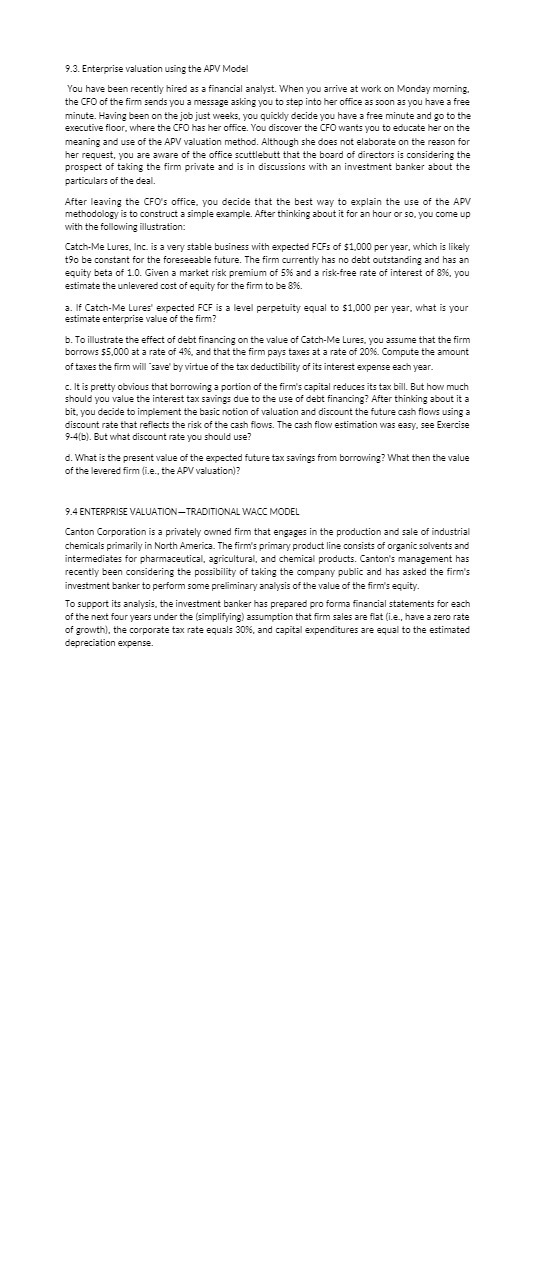9.3. Enterprise valuation using the APV Model You have been recently hired as a financial analyst. When you arrive at work on Monday morning. the CFO of the firm sends you a message asking you to step into her office as soon as you have a free minute. Having been on the job just weeks, you quickly decide you have a free minute and go to the executive floor. where the CFO has her office. You discover the CFO wants you to educate her on the meaning and use of the APV valuation method. Although she does not elaborate on the reason for her request, you are aware of the office scuttlebutt that the board of directors is considering the prospect of taking the firm private and is in discussions with an investment banker about the particulars of the deal. After leaving the CFO's office. you decide that the best way to explain the use of the APV methodology is to construct a simple example. After thinking about it for an hour or so, you come up with the following illustration: Catch-Me Lures, Inc. is a very stable business with expected FCFs of $1,000 per year, which is likely to be constant for the foreseeable future. The firm currently has no debt outstanding and has an equity beta of 10. Given a market risk premium of 516 and a risk-free rate of interest of 8%%, you estimate the unlevered cost of equity for the firm to be 896. 3. If Catch-Me Lures' expected FOF is a level perpetuity equal to $1,000 per year, what is your estimate enterprise value of the firm? b. To illustrate the effect of debt financing on the value of Catch-Me Lures, you assume that the firm borrows $5,000 at a rate of 4%%, and that the firm pays taxes at a rate of 20%%. Compute the amount of taxes the firm will "save" by virtue of the tax deductibleity of its interest expense each year. c. It is pretty obvious that borrowing a portion of the firm's capital reduces its tax bill. But how much should you value the interest tax savings due to the use of debt financing? After thinking about it a bit. you decide to implement the basic notion of valuation and discount the future cash flows using a discount rate that reflects the risk of the cash flows. The cash flow estimation was easy. see Exercise 9-4(b). But what discount rate you should use? d. What is the present value of the expected future tax savings from borrowing? What then the value of the levered firm (i.e., the APV valuation)? 9.4 ENTERPRISE VALUATION-TRADITIONAL WACC MODEL Canton Corporation is a privately owned firm that engages in the production and sale of industrial chemicals primarily in North America. The firm's primary product line consists of organic solvents and intermediates for pharmaceutical, agricultural, and chemical products. Canton's management has recently been considering the possibility of taking the company public and has asked the firm's investment banker to perform some preliminary analysis of the value of the firm's equity. To support its analysis, the investment banker has prepared pro forma financial statements for each of the next four years under the (simplifying) assumption that firm sales are flat (i.e., have a zero rate of growth), the corporate tax rate equals 30%%, and capital expenditures are equal to the estimated depreciation expense







